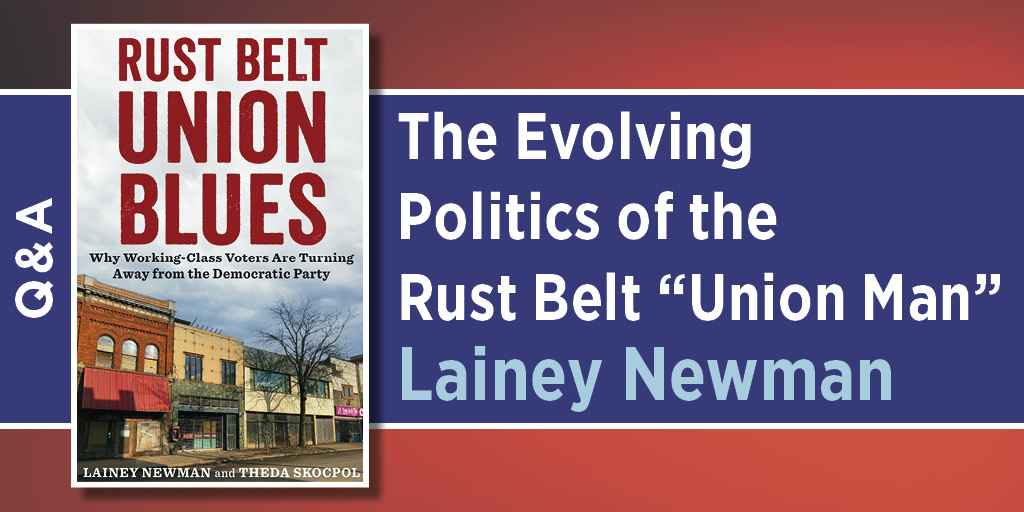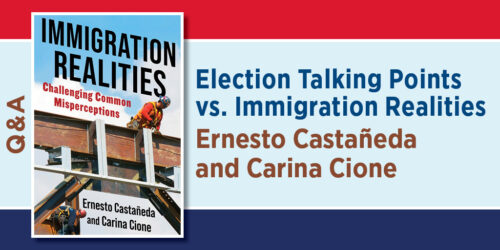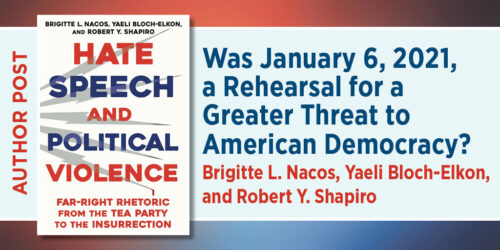The Evolving Politics of the Rust Belt “Union Man”
Lainey Newman

In the heyday of American labor, the influence of local unions extended far beyond the workplace and conveyed fundamental worldviews, making blue-collar unionists into loyal Democrats who saw the party as on the side of the working man. Today, Republican-leaning groups and outlooks have burgeoned among the kinds of voters who once would have been part of union communities. Rust Belt Union Blues: Why Working-Class Voters Are Turning Away from the Democratic Party sheds new light on why so many union members have dramatically changed their party politics. In this Q&A, Lainey Newman, who coauthored the book with Theda Skocpol, discusses the changing identity of midwestern blue-collar union members and their changing political loyalties.
Q: There have been lots of efforts in recent years to explain why the majority of the “white working class” went for Trump in 2016 and 2020. What does Rust Belt Union Blues add to that narrative?
Lainey Newman: Rust Belt Union Blues analyzes the transformation of social and political outlooks among blue-collar union members in the industrial Midwest, many but not all of whom were white men. Our analysis is limited to this subset within the amorphous category of the “white working class,” which we actually believe to be an imprecise and overly broad term. Whereas many scholars have attributed the increasing popularity of Republicans among working-class voters to the increasing salience of “cultural” issues, we look at how social ties and community networks within union communities have changed. The changes in voting trends among this population are particularly interesting and important to study because, in the mid-twentieth century, the majority of union members reliably voted for Democrats. Although labor unions have long been closely associated with the Democratic Party, a chasm has developed in recent decades between the positions pushed by top-level union leadership and the political outlooks among the rank-and-file. We go back much further than 2016 to trace the evolution of political loyalties of union members. In western Pennsylvania, counties outside the city of Pittsburgh were competitive for Democrats into the 1990s but have since become increasingly red.
Q: One of your first chapters is entitled “The Social Underpinnings of the Union Man.” Who was the so-called union man?
Newman: Whenever I introduce the concept of the “union man,” people generally have an intuitive understanding of what that concept is—it’s one of those prototypical American tropes. When people hear the term, they conjure up a particular image, probably of a middle-aged white man with dirty hands and a lunch pail. Though the term is widely known, its meaning is less so, and it certainly hasn’t been studied in much detail. The union man was a shared identity to which many union members subscribed in the mid-twentieth century. The key tenets of this identity were mutual commitment to one’s fellow union members, historical awareness of the importance of the labor movement, and occupational pride in one’s industry or craft. This identity was reinforced in many ways and in many different settings because the union was involved in members’ lives not only in the workplace but also in the community. For many, being a “union man” was—and to a certain extent still is—a central part of people’s identity. The salience of the union as a crucial component in how people defined themselves in relation to the world was a key reason members supported union positions and candidates.
Q: You use a lot of different analytical methodologies in this book—you do interviews and look at archival records and engage in ethnographic and quantitative analyses. One of your more creative and untraditional methods was to look at bumper stickers in employee parking lots. Tell us about that.
Newman: Well, throughout the research process, I did a lot of driving around western Pennsylvania. Much of our research took place during the pandemic, so we had to navigate those circumstances. One time, when driving around, I noticed some cars parked near a unionized steel mill that had political bumper stickers. I decided to drive through the parking lot and see what the bumper stickers were. I found that the vast majority indicated support—among union members in this “employee-only” parking lot—for conservative causes, particularly for the Second Amendment and Trump. I spoke with Theda after that initial drive-through, and she and I decided I would go back and tally the stickers as a proxy for how employees were expressing their political and civic commitments.
Of course, the measurement is far from perfect, but we think it’s important. After doing the tallying, I called up some of my older retired steelworker interviewees and told them what I saw. They weren’t surprised in the least because they have seen this transformation take place. Though there was no way to compare to the parking lots of yesteryear—and I don’t even know that they would’ve had bumper stickers back then—these retirees were our vision into the past, when workers did not, at least openly, support Republican candidates. That last part is important, too: these workers are publicly and proudly pronouncing their support for Republican causes and candidates. Before, publicly supporting a Republican candidate would have been seen as disloyal to one’s fellow union members, and that person would have been challenged on his views. That’s no longer the case.
Q: The United States is currently experiencing a resurgence of support for labor unions. What does Rust Belt Union Blues tell us about how unions can maintain that momentum?
Newman: Most social science literature on organized labor focuses on the role that unions play in the economic and political sphere. Rust Belt Union Blues, in contrast, looks at the underemphasized yet vitally important community-building role that unions played in their heyday. Unions, in the mid-twentieth century, were salient to their members and their members’ families because they were highly integrated into local communities. Workers would interact with and encounter their union and fellow members, in some form or fashion, in many different parts of their lives, whether recreationally via union softball and bowling leagues or religiously via charity partnerships with local churches. Members also received important pieces of information—relevant to their personal lives, like how to access federal benefits or rules to know about hunting season—through union-sponsored publications, including local union newsletters, monthly international union magazines, and, often, even labor newspapers funded by several regional unions. This is all to say—if unions want to have staying power in the minds of their members, they should be as involved as possible in local communities and with union families, and they should prioritize communicating with their members. Building back a sense of shared identity centered around union membership would help grow the momentum that unions are currently experiencing because of increased support for organized labor.
Q: The labor movement looks very different today than it did during the main period of your research. Do your findings extend to the present day?
Newman: The labor movement absolutely looks different today, but our findings are still highly relevant. The “union man” of the mid-twentieth century was generally a white man. Now, new union members are likely to be women and people of color, often in the service industries. Public-sector unions are also now much more common than private-sector unions. But being a “union man” wasn’t premised on gender specifically; it was about the extent to which members bought into their union. Community building and buy-in are important for all unions. And although there are not as many union members in the Rust Belt as there once were, there are still some there. Of course, politically, the Rust Belt states hold a lot of swEay. So even though the union population is smaller than before, it’s still incredibly important to think about how union membership interacts with political loyalty.








